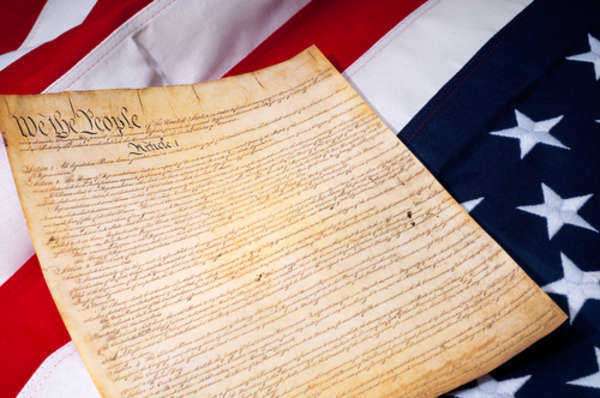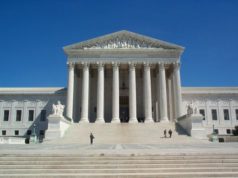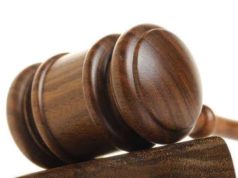Table of Contents

Introduction:
The issue of the right to bear arms has always been a contentious one in the United States. The Second Amendment to the US Constitution states that “the right of the people to keep and bear Arms, shall not be infringed.” The interpretation given to this Amendment has been challenged numerous times throughout US history. The Supreme Court, the highest Judiciary body in the US, has made several decisions concerning the right to bear arms.
This article will explore the Supreme Court’s right to bear arms and how it relates to the right to bear arms. We will discuss which decisions the Supreme Court has made in relation to the topic listed. The article will provide specific and interesting information to help readers gain a deeper understanding of this important topic.
The Second Amendment:
The Second Amendment to the US Constitution is one of the most controversial amendments. It states, “A well-regulated Militia, being necessary to the security of a free State, the right of the people to keep and bear Arms, shall not be infringed.” This Amendment was ratified on December 15, 1791, and has been debated ever since.
The debate surrounding the Second Amendment revolves around the interpretation of the Amendment’s wording. A big question is whether it grants the right to bear arms to individual citizens or only to members of a militia. For many years, this question went unanswered, but it was brought to the forefront in the Supreme Court in the 2008 case of District of Columbia v. Heller.
District of Columbia v. Heller:
The case of District of Columbia v. Heller tackled the issue of whether the Second Amendment protected an individual’s right to bear arms. The case centered on four provisions of the Firearms Control Regulations Act of 1975, which made it illegal to possess a handgun, an unregistered firearm, and ammunition. The Act also required all firearms in the home to be unloaded and disassembled or bound by a trigger lock.
The plaintiff, Dick Heller, was a special police officer in Washington, D.C. who had been denied the right to own a handgun to protect himself in his home and serve his job. He argued that this law violated his Second Amendment right to bear arms. Heller (2008) was the first Supreme Court decision addressing the Second Amendment since 1939.
In a landmark 5-4 decision, the Supreme Court held that the Second Amendment did protect an individual’s right to bear arms. Justice Antonin Scalia, writing the majority opinion, wrote, “the Constitution guarantees the individual right to possess and carry weapons in case of confrontation. This right is not unlimited and does not prohibit the regulation of firearms.”
The Court’s ruling in Heller was a significant one. It settled the long-standing debate about whether the Second Amendment protected the individual right to bear arms. However, the Court made it clear that this right was not unlimited and could still be regulated.
McDonald v. City of Chicago:
The case of McDonald v. City of Chicago was also a significant one concerning the right to bear arms. It was decided in 2010 and challenged the Chicago handgun ban and the requirement that guns in homes be registered. The plaintiffs argued that the Second Amendment should apply to the States through the 14th Amendment.
The District Court ruled against the plaintiffs, stating that the Second Amendment did not apply to the States through the 14th Amendment. The Supreme Court agreed to hear the case and eventually decided that it did indeed apply.
In a 5-4 decision, the Supreme Court held that the Second Amendment protected an individual’s right to keep and bear arms, and this right applied to the States through the 14th Amendment. The Court’s ruling was based on a theory called “incorporation,” which allows the Bill of Rights to apply to States through the 14th Amendment’s Due Process Clause.
The Court’s ruling in McDonald v. City of Chicago helped to further clarify the Second Amendment’s meaning and how it applied to individual citizens. The Court’s incorporation theory and ruling allowed individuals living in states with restrictive gun laws to challenge them based on their Second Amendment rights.
United States v. Miller:
The case of United States v. Miller is another significant Supreme Court case concerning the right to bear arms. The case was decided in 1939 and dealt with the National Firearms Act, which required the registration of sawed-off shotguns and machine guns.
The defendants were two men indicted for violating the Act. They argued that the Act violated their Second Amendment rights. The Supreme Court disagreed, stating that the Second Amendment only protected the right to bear arms that were “part of the ordinary military equipment” and that the sawed-off shotgun in question was not.
The Court’s ruling focused on the connection between the Second Amendment and the militia, stating that individual citizens had a right to bear arms for the purpose of a militia but not for private use. The Court’s decision in Miller was significant because it helped to narrow the scope of the Second Amendment and its meaning.
Conclusion:
The Supreme Court’s decisions concerning the right to bear arms have been instrumental in shaping US law and policy. The Court’s ruling in Heller and McDonald v. City of Chicago helped to define the Second Amendment’s meaning and how it applied to individual citizens.
The Court’s decision in United States v. Miller also helped to clarify the Second Amendment’s connection to the militia. The right to bear arms is still a contentious issue in the United States, and it is likely to continue to be so. However, the role of the Supreme Court in interpreting and defining the Second Amendment cannot be overstated. As long as the Second Amendment remains a part of the US Constitution, the Supreme Court will undoubtedly continue to play a vital role in shaping US gun laws and policies.
Residing within the Second Amendment of the United States Constitution, the right to bear arms represents an area of interest that touches upon various aspects of life. This right specifies an individual’s right to carry and maintain weapons. It also presents an area for great contention among the masses of people.
As certain populations believe in the right to protect oneself by carrying firearms or the right to go hunting, many others reside within the realm of belief in which guns may interfere with persons’ rights to public safety. In addition to this is the seriousness behind illegal gun sales that only serve to fuel the fire behind which such contention exists.
The “Brady Handgun Violence Prevention Act” set forth that Federal background checks be required for the purchasing of firearms within the United States. It was approved by President Clinton and also included additional qualifications such as prohibition upon individuals conveying firearms from states or foreign entities. Strict regulations are imposed upon persons, such as convicts, “fugitives from justice,” drug addicts, illegal aliens, and domestic abusers, to state a few. Gun laws remain an area that is constantly changing, with the restrictions placed upon firearms being the basis of such debate.
One of the main Supreme Court cases that place the right to bear arms at its focus is that of Columbia v. Heller. In this case, it was ruled that the Second Amendment provides protection for individuals to carry firearms despite the absence of military affiliation whatsoever. Despite the District of Columbia’s barring of firearms within the home, individuals do have the right to self-defense. The Court does, however, specify that despite this ruling, it still maintains strict prohibitions upon distinct populations. These include the possessing of firearms by individuals such as criminals and the mentally-afflicted as well as legislation concerning the possession of firearms within areas such as schools and Government buildings.
The contention that resides with the opposition of the right to bear arms also stems from the National Rifle Association. The NRA promotes the use and ownership of firearms by the public. It stands by the belief that such rights to gun ownership falls under that of a civil liberty in accordance with the 2nd Amendment. In addition, the NRA maintains opposition to all gun control policies that the Government attempts to pass. As an alternative, they suggest increased sanctions on existing laws such as that which is in relation to the gun possession of criminals and felons. The right to bear arms represents an area that must come to grips with varying public opinion.


























